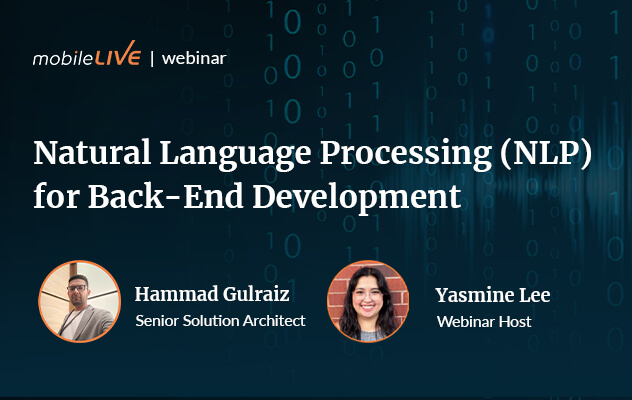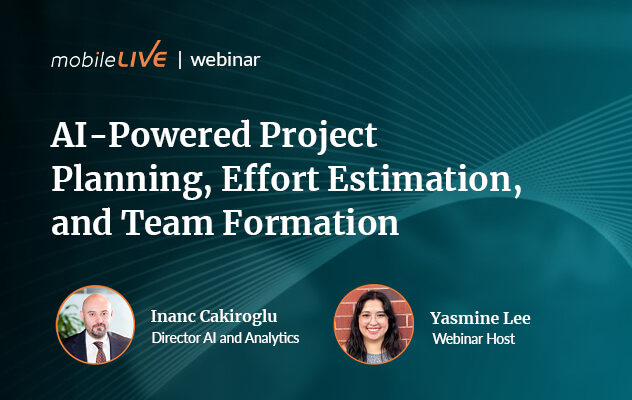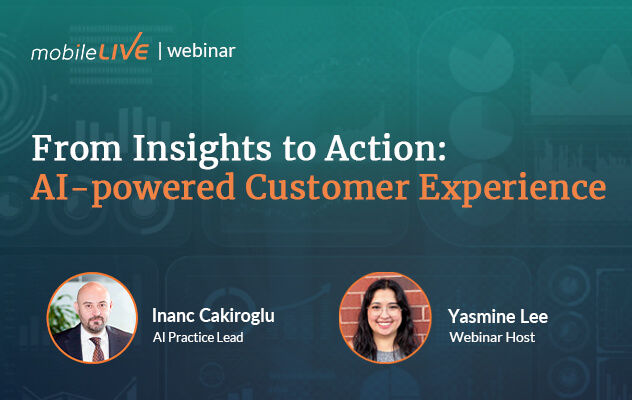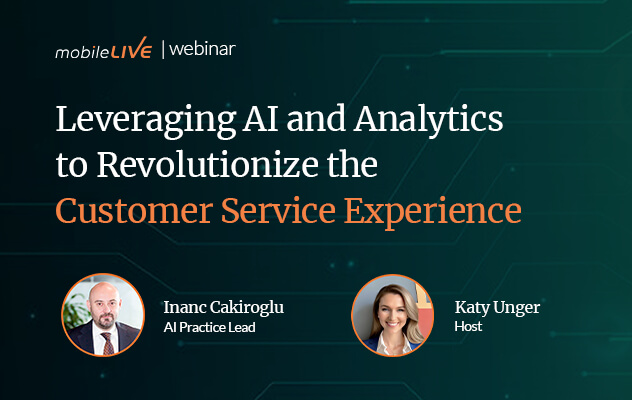Data & AI
Accelerate innovation by turning data into strategic insights.

In an era where intelligent decision-making drives competitive advantage, our Data & AI practice helps businesses transform complex data into strategic insights, enabling smarter and faster decisions across all levels of the organization.
We leverage advanced AI models and data analytics to deliver tailored solutions that enhance operational efficiency, optimize processes, and unlock new growth opportunities. With SOC 2 Type II compliant solutions, our practice not only accelerates innovation but ensures that business consistently achieve their goals with the highest standards of safety and governance. By partnering with us, businesses turn data into a powerful asset, fuelling progress, transformation, and sustainable success.
200%
ROI generated
10K+
man-hours saved every month
60%
manual effort optimization
Services
Consulting & Experience
- AI Enablement
- Data Governance
- Business Intelligence
- Data Analytics
- Business Enablement
Software Engineering
- ML Model Training
- Generative AI
- Intelligent RPA
- Conversational AI
- Big Data & Visualization
Quality Engineering
- Test Data sets
- AI Compliance
- AI Model Testing
- Human-in-the-loop
- Data Migration Testing
Tools & Technologies
Accelerators
Enablers for Enhanced Efficiency and Faster Go-to-Market
Effort Estimation
Optimize project planning and accuracy with AI-driven automation that converts BRDs into detailed WBS, providing precise time and cost estimates.
Skill Scoring
Enhance team productivity by utilizing AI to aggregate and analyze performance data from tools like Jira, GitHub, and SonarQube.
Team Formation
Streamline team assembly and budgeting with an AI-driven tool that suggests optimal team configurations based on project needs and team performance.
Code Transformation
Automate secure code conversion and modernization through code analysis, security and architecture improvements, and generation of target code.
Code to Documentation
Automatically generate various document types, including business and technical analysis with diagrams, and ensure consistency with organizational style.
Knowledge Management
Enhance your enterprise's GenAI capabilities using RAG to deliver text and visual responses to organization-specific queries with industry-led context.
Ready to accelerate innovation? Discover strategic insights.
Implemented a native app data pipeline to improve security and insights on data leaks.
Introduced AI-driven processing to derive real-time insights that boosted customer retention and increased churn rates.
Created a mobile survey (with NLU/NLP synthesis), issue reporting platform, and SDKs for real-time customer engagement applications
Insights

The integration of AI, especially NLP, in Back-End Development is a growing trend because of its advanced solutions compared to traditional methods. Learning and implementing NLP models can significantly improve the efficiency and accuracy of text processing tasks.This webinar on Natural Language Processing (NLP) for Back-end Development will help you stay current with cutting-edge practices and learn how to implement NLP in Back-End Systems.Expertly tailored for BE Developers, Tech Leads, Solution Architects, Data Scientists, and AI Enthusiasts, this webinar is a must-watch if you want to gainUse Cases: Specific use cases where NLP can be applied in Back-End development to replace traditional methods. Best Practices: How to integrate NLP models into existing Back-End systems, including best practices and common pitfalls. Tools & Libraries: An overview of key tools and libraries for NLP integration in Back-End development. Real Examples: Case studies and examples of how NLP has been successfully used in backend development to solve real-world problems. Future Trends: Insights into future trends in AI and backend development, and how NLP is expected to evolve and impact the field. Don’t let outdated methods hold you back. Watch now to learn more!
Natural Language Processing (NLP) for Back-End Development

The planning phase of the software development lifecycle (SDLC) is often riddled with challenges and uncertainties. It’s a phase where meticulous attention to detail and precise estimations are crucial. Yet, it’s also the phase most susceptible to human error and misjudgment. In many cases, these errors lead to project delays, cost overruns, and resource misallocation. For instance, consider a CRM application project initially estimated to take one year but ultimately stretched to three years due to unforeseen complexities and a lack of proper documentation and team alignment.These common issues in project planning have driven the need for more advanced, reliable solutions. Enter AI-based accelerators, specifically designed to streamline and enhance the planning process. This blog is the first of a three-part series and will focus on the first of these accelerators: creating Work Breakdown Structures (WBS) for business requirements using AI. The upcoming parts of this blog series will focus on Developer Scoring Mechanism and Team Formations.The Role of AI Artificial Intelligence (AI) has the potential to revolutionize the way we approach WBS creation. Traditionally, WBS creation involves breaking down a project into smaller, manageable tasks, estimating the effort required for each task, and ensuring that these tasks align with the overall project goals. This process is often manual, time-consuming, and heavily reliant on the experience and judgment of project managers.By leveraging AI, particularly Large Language Models (LLMs) and Machine Learning (ML), we can automate and enhance this process. AI can process unstructured data from Business Requirement Documents (BRD), analyze historical data, and generate detailed WBS with precise effort estimations. This not only reduces the time and effort required but also improves the accuracy and reliability of the estimations.How it Works Input BRD: The process begins with the user providing the BRD. This document outlines the project requirements in detail. WBS Task Creation: The AI system, powered by LLMs, processes the BRD and breaks it down into smaller, specific tasks. This involves understanding the requirements and translating them into actionable items in the form of Epics and Stories. Effort Estimation: Each task is then assigned an effort estimation based on ML models trained on historical project data. This step involves vectorizing the tasks and matching them with similar tasks from past projects to determine the likely effort required. Feature Breakdown: Under the Hood Natural Language Processing: The AI system reads the BRD and identifies key components. Using Natural Language Processing (NLP), it extracts relevant information and structures it into a format suitable for further processing. Leveraging LLMs: The system breaks down the requirements into specific, manageable tasks. This step ensures that all aspects of the project are covered, and nothing is overlooked. ML Models: These models come into play to estimate the time and resources needed for each task. These models use historical data to provide accurate and realistic estimations. Integration: The system integrates with project management tools like Jira, allowing seamless transition from planning to execution. This integration ensures that tasks are not only well-defined but also easily manageable within existing project management frameworks.Accelerator Benefits Deploying this accelerator in a project management setting can bring about significant improvements in efficiency and accuracy. According to industry statistics, project delays and budget overruns are primarily due to inaccurate initial estimates. By using AI to generate WBS and effort estimations, businesses can:Reduce Planning Time: The time required to create a WBS and estimate efforts can be reduced by up to 50%. This acceleration in the planning phase allows projects to commence more quickly. Increase Estimation Accuracy: AI-driven estimations are more accurate and reliable, reducing the likelihood of project delays by up to 30%. This accuracy helps in setting realistic timelines and budgets. Enhance Resource Allocation: With detailed and accurate WBS, resource allocation becomes more efficient. This ensures that the right resources are assigned to the right tasks, improving overall project execution. Business Impact The business impact of deploying this accelerator is substantial. It not only saves time and reduces costs but also ensures that project teams are better prepared and more accurately aligned with project goals. This leads to higher project success rates and increased client satisfaction.For example, a study by the Project Management Institute (PMI) found that poor project planning is a leading cause of project failure, affecting 39% of projects. By integrating AI-driven WBS creation, companies can mitigate this risk, leading to more successful project outcomes. Additionally, Gartner predicts that by 2025, AI will play a role in the management of at least 50% of all projects, highlighting the growing importance and relevance of AI in project management.Summing It Up In conclusion, the WBS accelerator powered by AI represents a significant advancement in project management. By automating and enhancing the WBS creation and effort estimation process, it addresses many of the common challenges and uncertainties faced during the planning phase. This leads to more accurate planning, better resource allocation, and ultimately, more successful project outcomes. As the industry continues to embrace AI, tools like this accelerator will become indispensable for project managers seeking to improve efficiency and accuracy in their projects.Up Next In the next blog, we will dive into the second AI accelerator: the Developer Scoring Mechanism. We will explore how this tool leverages AI to provide precise, real-time performance evaluations of developers, helping project managers to make informed decisions about team composition and resource allocation.
AI-Based Accelerators Series: AI for Effortless Work Breakdown Structures (WBS)

Translating business requirements into technical deliverables, accurately estimating effort, and allocating the right talent is complicated. This often leads to cost estimation errors, talent misallocation, and project failure.Here’s how our AI-Powered approach has addressed these challenges:Effort Estimation We leverage AI to transform a Business Requirements Document (BRD) into a detailed Work Breakdown Structure (WBS) with time and cost estimates, reducing the time and human error involved in project planning.Team Scoring We use data from tools like Jira, GitHub, and SonarQube to calculate a comprehensive score for developers based on their performance, experience, and code quality, facilitating informed team selection and performance monitoring.Team Formation Our approach recommends optimal project teams by analysing historical performance data and matching it with project requirements, ensuring the best fit in terms of skill, cost, and delivery time.Watch this webinar for a demonstration highlighting AI-powered approach to Effort Estimation, Team Scoring, and Formation.
AI-Powered Project Planning, Effort Estimation, and Team Formation

71% of consumers prefer brands that offer personalized experiences – and 76% get frustrated when that does not happen.The modern customer seeks a personalized experience, yet delivering it at scale is a constant challenge. In this webinar, learn beyond the foundational concepts on:Customer 360 View (with contact center data, social media analytics, and digital experience score) Discovering and Analyzing Customer Patterns (through contact channels to help decide the next best action) Personalizing Offerings and Actions (using real-time interaction management and Gen AI) Whether you’re a business leader, customer service professional, or AI enthusiast, by the end of this webinar, you will be equipped with the latest strategies, real-world examples, and industry use cases to drive customer satisfaction, engagement, and personalization.Watch now transform your customer interactions and excel in the rapidly evolving domain of customer service technology.
From Insights to Action: AI-powered Customer Experience

63% consumers expect customer service agents to know their unique needs and expectations83% customers will switch to a competitor after a frustrating customer service experience79% customer service leaders plan to invest in more AI capabilities over the next two yearsWith the increasing number of customer-facing platforms, customer expectations are also growing. Today, understanding and solving customer needs heavily depends on leveraging customer interaction data and personalizing the customer service experience.In this webinar, learn how to proactively exceed customer expectations using AI and Analytics in Customer Service.By the end of this session, you will find yourself equipped withA Deep Understanding of how predictive analytics and AI anticipate customer needs Personalization Strategies to tailor customer interactions and enhance satisfaction Real-world Case Studies showcasing successful AI and Analytics implementation Integration Strategies to seamlessly integrate AI with existing customer service systems Emerging Trends to stay ahead and secure a competitive edge for your organizationJoin AI Practice Lead Inanc Cakiroglu in conversation with host Katy Unger and harness the full power of AI and Analytics to transform your customer service strategy.
Leveraging AI and Analytics to Revolutionize the Customer Service Experience

Maximizing Business Outcomes Through AI Adoption

Being digitally native presents young companies with a predominant advantage over large corporations:Being able to quickly implement, scale and steer innovative technologies tomaximize profitability through experience, and minimize the time to market. With the advent of intelligent technologies, many startups have managed to leverage their overall growth through personalization strategies.This raises an alarming concern for large corporations:Will they ever be able to match up with digitally native companies in terms of speed of customer experience adaption and enhancement?To answer this question, we need to dive into how Hyper-Personalization in the customer experience strategy can be achieved for large-scale organizations.Evolution of Hyper-PersonalizationThe era of Industry 1.0 was all about mass production.Only quality and quantity mattered. Customer experience was the last priority when it came to budgeting activities.Then, things started to change: customers wanted differentiation and value addition on top of what they were paying for the product. This gave birth to branding.Brands started to market the value addition of their products and created unique propositions to attract customers. Factories started mass customization of products to facilitate various brands from the same assembly line. Some of the innovative companies started to invest heavily in categorizing customers based on their needs. This segmentation approach enabled the brands to customize products as desired by that customer segment.But this wasn’t enough.There were still several untapped customers whose needs were not being fulfilled through basic consumer categorization.In turn, micro-segmentation was born, which let companies tap into more variables related to consumer preferences, buying behavior and interests.With advancements towards the digital era, this approach saw further changes, to the extent that now, customers expect brands to know them at their very first interaction.Today, most customers prefer to purchase from brands that offer personalized experiences. And, more often than not, they will respond to the brand’s marketing messages only if they feel those messages are crafted to their needs.Personalization Vs Hyper-PersonalizationHyper-Personalization is personalization on steroids.In customer experience strategy, ‘personalization’ itself is technically based on contextual data that is used to tailor the experience as per the customer’s need through trend analysis of that particular customer (or the segment to which the customer belongs).On the other hand, hyper-personalization factors in real-time customer data, weighs fresh insights with historical data, and then tailors the experience as per customer preference — and that too in real-time.In essence, hyper-personalization is personalization powered with artificial intelligence to analyze, predict, and service the customer in real-time.Implementing Hyper-Personalization in Your Customer Experience StrategyAs simple as the idea sounds of offering the right experience to the right customer and adjusting according to the next predicted customer action, its actual implementation requires an entire ecosystem modernization.On the whole, the implementation of such a hyper-personalized customer experience strategy may seem like an impossible task, but adequate strategic evaluation of the transformation and prioritizing right will help achieve maximum value as you go about the complete overhaul.1. Evaluate existing digital ecosystemLarge-scale companies that have processes and systems working successfully for many years are least likely to swiftly energize the effort towards hyper-personalization.The biggest challenge is replacing legacy platforms to cloud-based ecosystems. Without the free flow of data in a scalable ecosystem, real-time customer insights cannot be fully utilized.However, from a strategic viewpoint, the long-term benefits of customer engagement (topline revenues, reduced churn, and low cost of superior customer servicing) outweigh the costs involved in the short-term.Just by experimenting with some hyper-personalized customer experience journeys, many organizations start to realize the need for advanced intelligent customer systems.Key Actions:Instead of considering the short-term business case for hyper-personalization in the customer experience strategy, evaluate the benefits for 3+ years. Evaluate the existing customer experience journey across multiple channels against the value garnered through intelligent automated servicing, personalized cross-selling, and marketing. 2. Centralized customer profilingCompanies with a diversified portfolio of products face challenges in sharing customer insights at scale.Such siloed insights are only useful for a particular product, leading to a nightmare for businesses that miss out on the cross-sell opportunities and customer servicing without a centralized customer system. An omnichannel customer experience strategy will just cover the needs of the customer experience journey and fail to predict the next action the customer is going to perform.Complete customer profiling can be achieved through both quantitative data (big data mining) and qualitative data (customer research) and can be combined to form powerful insights for your customer experience strategy.Customer interaction for research has to become a governed process that helps in capturing the emotional elements associated with a product and the brand. Through such a centralized customer profiling system, all channels can benefit from any of the products that the company can has to offer. This system can then be designed to make adjustments in customer profiles automatically through new data.Key Actions:Quantitative customer data alone is not enough. A combination with qualitative customer data will help develop the most impactful customer profile. Operations of such a centralized customer profiling system can become a costly nightmare. Design it to intelligently and automatically adjust profiles based on new events. 3. Using AI to Power Up the Customer Personalization StrategyPersonalization strategies get the companies to a point where they are able to offer the experience based on contextual data.With advancements in artificial intelligence, companies can now capture real-time customer behavior, mix it with the captured emotional state of the customer, and adapt to a serving, selling or retaining mode.There are many customer and channel-related use cases that the brand can use to maximize value by providing the desired customer experience and changing the experience focus in real-time:a) Customer action prediction: Gives the ability to assess the next action the customer is going to perform and display the right message on any particular channel.b) Channel attention prediction: Predicts the customer touchpoint traffic and process glitches, and automatically triggers a suitable response.c) Natural Language Processing: Enables real-time interaction analysis to extract the most relevant insights from any live interaction. Its use can range from gauging the emotional state of the customer through speech analytics to evaluating the propensity to churn through keyword extraction.d) Interaction Assist: Enables the company’s human resources to assist in creating a personalized and pleasant interaction in real-time.Keeping the customer interaction humanized and personalized with the backing of AI is itself an evolving process where interconnected systems like CRM, product catalog, complaint management system, order tracking and others work in harmony.Key Action:Initiate the implementation of your CX strategy by enabling AI to assist human resources by converting ambiguous data into useful insights during the customer interaction. Making this a part of the customer experience strategy will set the pace for the overall transformation. 4. Connected design systemsWhen large-scale organizations aggressively adapt to digital strategies, the design processes and repositories usually lie in silos across multiple divisions of the company.This creates an inherent challenge in reusability of design systems.Not only should these design systems be interconnected, but a free flow of information regarding design principles, libraries, practices and guidelines should be integrated at a cultural level across the organization.To attain maximum benefits from the customer experience strategy, the system should be sufficiently agile to quickly adapt to changing customer needs for both new and existing products.Key Actions:Strongly bind design systems to maintain experience harmony across the product portfolio. Structured flow of design information across the departments should be made a cultural value of the organization. 5. Hyper-personalized content strategyScattered product catalogs and content management systems are one of the biggest challenges of large-scale organizations, especially if the company offers a diversity in products.A centralized product and content catalog becomes the one and only true source of all product-related information to offer a personalized experience in terms of pricing, customer messaging, tailored content generation, and personalized promotions.This system is then actively utilized across all customer touchpoints and with predictive AI, it provides the opportunity to offer the right product at the right time to the right customer to maximize the chances of conversion.The importance of making this a part of the customer experience strategy is further realized by observing customer behaviours:Every 3 in 4 customers will get frustrated if they are shown products that are not relevant to them, and most expect the brands to only recommend products that are relevant to them.Key Action:Personalized product recommendation with the right key message across multiple channels is by far the most attractive experience for customers. Therefore, it should be made an integral part of the customer experience strategy. 6. Automate at scaleAs the AI ecosystem grows with more tools, it will consume more resources.Automation and simplicity of both quantitative and qualitative data collection should be made part of the transformation strategy. The ecosystem should be robust enough to self-correct itself by absorbing data from both internal and external sources.Additionally, automation can also be utilized for activities like content generation, product personalization and customer servicing that constitute an integral part of the overall customer experience strategy.Key Action:Make automation part of the AI transformation strategy. TakeawayFrom a strategic viewpoint, a hyper personalized customer experience strategy may seem like a complete overhaul of the existing ecosystem.In reality, organizations start by creating analytics-driven customer experience to maximize personalization opportunities.Once the practice of data-driven personalization is established, they start introducing bits of AI into facilitating the brand’s human resources towards preferred customer recommendations.Finally, they synergize automation, analytics, and AI in the overall customer experience strategy to offer a wholesome hyper-personalized, omnichannel customer experience at all touchpoints in both marketing and customer servicing.To achieve success in personalized customer experiences, hyper-personalization of your customer experience strategy serves as a revolution to the way large organizations analyze, understand and serve their customers in real-time.FAQsWhat is the hyper-personalization model?The hyper-personalization model uses AI, automation, and analytics to analyze, predict, and service the customer using real-time data on customer behaviours.What is the difference between personalization and customization?Personalization is when you analyze customer data to create a product or add modifications to it that meet your customers’ needs. Customization is what changes the customer makes to the product to meet their specific requirements.
Leveraging AI and Beyond: 6 Customer Experience Strategies For Hyper-Personalization

The benefits of test automation are apparent – faster feedback to your development team, more frequent test executions, increased code coverage, and faster, more frequent releases. And it’s these reasons and many others that shed light on why companies worldwide invest millions of dollars in test automation – to ensure that they are developing exceptional software!However, the number of devices and platforms running that same business software isn’t static, rather, ever-increasing. Your software might depend on other platforms that your customers use to interact with your services and products. All the in-app software services are transitioning to “inter-app,” and because of this transition, your automation must account for the following paradigms when testing more complex software:Increased number of interfaces (inputs & outputs) Increased IoT (more devices = more testing) Increased inter connectivity With the exponentially increasing number of interdependent and connected devices causing the software ecosystem to grow, it becomes more critical than ever to consider End-to-End (E2E) Test Automation for your operations.The What & Why of E2E Testing E2E testing is a technique used to test the whole software product from the start to the end, ensuring that it behaves as expected. While testing, it’s typically done it from the end user’s perspective by simulating the software in a real environment. E2E testing validates various dependencies and also checks data integrity and integration components.Aside from better products, there are a number of growing drivers for adopting E2E testing:Reduces costs Reduces time to market Achieve higher code quality Shorter cycle times Frequent product releases Seamless integration with DevOps Software systems today are complex and often span multiple platforms, and those go on to contain various software subsystems. And the entire software can crash if even just one of those subsystems were to fail. From the perspective of business-ready software, this alone should underline the importance of E2E testing – but it is far from the only factor.Most modern software today allows various interactions between their subsystems. This added multiplatform complexity brings an elevated risk of failure; risks that can be avoided by adopting the following strategies:A regular check for any issues in the subsystems Expanding test coverage Verify the software product system flow There are ample use cases to apply E2E testing techniques that utilize the above strategies from a software development perspective. For instance, the very first step to develop an application begins with laying down the UI features and various UI interactions. E2E testing can simulate the entire data flow in these features to find out any bugs or dependencies early on. But we’ll get more into examples and use cases later. First, let’s tackle the most significant challenge at hand.where do we focus our time, from E2E, integration, and unitThe Biggest E2E Challenge How do you automate the E2E testing scenarios across various platforms and layers in a seamless manner? That is the biggest challenge in E2E testing.With increasing complexity and focus on interconnected software, the entire application ecosystem is composed of various independent subsystems. Such subsystems may be third-party or self-owned. While we all want to implement E2E test automation in our workflows, orchestrating the test automation across various platforms isn’t a job for an amateur.It requires merging together capabilities and technologies like Artificial Intelligence and Robotic Process Automation. And when you combine these you get HyperAutomation, the answer to the biggest question in E2E testing.What’s HyperAutomation? According to Gartner, “HyperAutomation is an unavoidable market state in which organizations must rapidly identify and automate all possible business processes.”Think of it as a bike versus a car. Sure, they can both take you to where you want to go, but the car will get you there much faster and more comfortably. Add in a little AI into the car, and suddenly you have a car that can take you to your destination with minimal input from you, safely and securely. That’s HyperAutomation.You should already be aware of the complex behaviour that modern software systems can have. E2E testing such systems demand not only a variety of tools, but multiplatform E2E test automation requires orchestrating these tools in such a way to achieve the desired level of testing.Multiplatform HyperAutomation is not an easy-to-implement methodology. It requires a unique approach, one that utilizes and balances the use of RPA, RTA (Robotic Test Automation), and AI to test any platform, ensuring maximum coverage. Not just that, in the end, a single report enables the agent to monitor the overall testing of the product. The entire process starts with making a wise selection of orchestrators to handle the multiple interfaces (self-built or 3rd party interfaces) within the product.RPA Process ExecutionHow to Combine RPA & RTA Concepts in 3 steps Select a multiplatform tool as the orchestrator. The orchestrator helps perform automation tasks on each interface and check the result before moving on to the next. Program the orchestrator as per your requirements using RPA. It enables Robotic Test Automation (RTA) among the various interfaces in the software. These interfaces might spread across multiple platforms. Our approach and recommendation to ensure they are tested is to do so independently using custom-built bots. Observe the entire flow in a single report using a central control once the test is complete. HyperAutomation In Action Now that you have a better understanding of what HyperAuromation is, let’s take a look at how it looks in application with a couple of real world use cases.Use Case #1 – Enterprise Banking One of our clients, a large Canadian bank, required testing their E2E procedure of opening a chequing account. For example, let’s assume a customer goes to a bank to open a chequing account. The teller would open the account using their banking software (desktop). Once the transaction gets completed, the form is pushed automatically to an iPad, where the customer can eSign it. When the eSignature completes, the teller downloads the eForms. For the E2E testing purpose, the bot validates the forms against a golden eForm.E2E Automation We then utilized an automation platform, in this instance, chose UXPLORE, to orchestrate interfaces across multiple platforms, quickly simplifying the requirement. Custom designed and developed client requirement oriented bots for downloading and comparing forms for complex scenarios like Form Download and Validation.These bots were then integrated with our automation platform for E2E orchestration. For instance, the transaction bot marked the start of the process for opening a chequing account. Finally, after all, bots complete their tasks, we provide a consolidated report as opposed to multiple reports for each platform and tool.Use Case #2 – IoT Infotainment System Recently, we received a requirement from one of Canada’s leading IoT firms to test their infotainment application. The application incorporated a test for temperature control using a circular knob. The user turned a knob on the application, and as a response, the temperature changes. E2E testing was needed to analyze the behaviour of the IoT system for the correct response.IoT Infotainment SystemAfter assimilating and analyzing the requirements, the use case suited HyperAutomation using the Eggplant Functional tool as the chief orchestrator and Python libraries for OBD Interface and Control Knob.We simulated the user turning the temperature control knob on the screen, setting the temperature to a particular value, say ‘x’ degrees. We were able to accomplish this by deploying a Python library-based simulation.To test a successful execution of the operation, we established a VNC connection using which we compared the actual output on the screen with the expected output as the visible test result.For posterity and thoroughness, we validated the information through the OBD interface to report on the screen for real-world testing. The final attestation was performed for the end-to-end process by simulating the condition in real life.Take away It is often said that necessity is the mother of all inventions, and overcoming the bottleneck E2E testing creates in the process of software deployment is definitely of pressing concern. That is because the world (and the systems that power it) is growing more complex, and we must abandon traditional methods of testing that no longer serve us. As should be clear from the information above, HyperAutomation is the solution to the most significant challenge facing E2E testing. And as this type of testing is no longer optional to handle the growing complexity of our environments, we anticipate that HyperAutomation is going to grow in not just popularity, but necessity.


